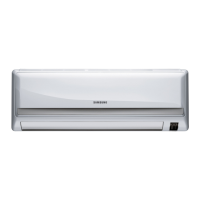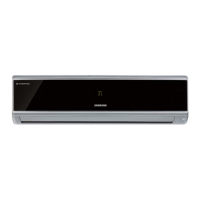Refer to the service manual in the GSPN(see the rear cover) for the more information.
AIR CONDITIONER THE FEATURE OF PRODUCT
AQV09FCN, AQV12FCN, AQV09NSAN,AQV12NSAN
SPLIT-TYPE AIR CONDITIONER
INDOOR UNIT OUTDOOR UNIT
Basic : AQV12FA
Model
: AQV09NSA
AQV09FC
AQV12NSA
AQV12FC
Model Code : AQV09NSAN AQV09NSA
X
AQV09FCN AQV09FC
X
AQV12NSAN AQV12NSAX
AQV12FCN AQV12FCX
High Energy Efficiency BLDC
Air Conditioner
Simple Flat Grille Design
good'sleep Mode
: good'sleep Mode can help you sleep quickly and
soundly and wake up refreshed.
Multi Functional Cleaning System
: Silver Nano Health System and Deodorizing/
Catechin Filter are adopted.
Silence Mode
: When you use the "Silence Mode", you can
experience extremely quiet operation of your
air conditioner.
AQV09FCX, AQV12FCX, AQV09NSAX,AQV12NSAX












